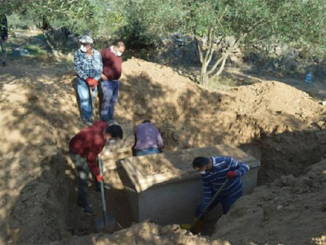Maritime salvage company Shinil Group (Korea) on July 17 released images of the wreck of the Russian warship Dmitrii Donskoi, which sank in 1905.
This ship attracted the attention of treasure hunters because it was reported that it was carrying 200 tons of gold when it crashed.
After many years of searching with the participation of a team of experts from Korea, China, England, and Canada, Shinil Group finally discovered the wreck of the Dmitrii Donskoi at a depth of 434 m, about 1 year from Ulleungdo Island – South Korea. .3 km on July 15.
The video released by Shinil Group shows the image of this 5,800-ton ship being severely damaged after being sunk in a clash with Japanese warships in May 1905. The ship was identified by its name written in Cyrillic on the stern.
Shinil Group Company (Korea) announced the image of the stern of the sunken ship with the name Donskoi written in Cyrillic on July 17. Photo: SHINIL GROUP
According to RT (Russia), Dmitrii Donskoi is an armored cruiser belonging to the Baltic Fleet of the Russian Imperial Navy. It was deployed to the Pacific with a number of other ships to participate in the Russian-Japanese war in 1904-1905.
During the naval battle of Tsushima, Dmitrii Donskoi was chased by a Japanese warship, the crew decided to sink the ship because they did not want to surrender. Shinil Group believes there is up to 200 tons of gold on the sunken ship and the entire treasure is estimated at $133 billion.
Yonhap news agency (South Korea) quoted Shinil Group: “Our discovery has ended speculation about the existence and location of Donskoi. We will soon carry out procedures to salvage the ship.” The group aims to salvage the wreck in October or November and announce what it finds in December this year.
The company added that it has reached an agreement to share half of the gold found with the Russian government (if any). Of the remaining half of the gold, about 10% is for investment projects on Ulleungdo island. In addition, a portion of the gold will be donated to joint projects to promote development in Northeast Asia, such as the railway connecting Russia and South Korea that passes through North Korea.



